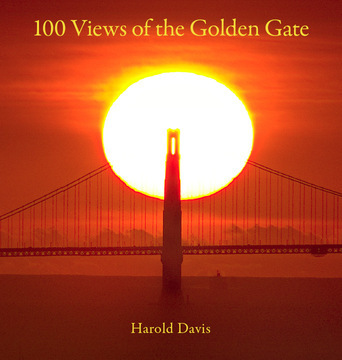Harold Davis's Blog, page 199
August 16, 2013
2014 Harold Davis Photography Workshop Schedule
For planning purposes, and to help you avoid disappointment, I wanted to let you know about the photography workshops I have scheduled in 2014. I am very excited about these opportunities because I think they will be great fun as well as a chance to learn photography in an intensive and immersive environment.
In addition to the workshops listed here I have been invited to give a series of three workshops in Germany in the June-July time frame. I also expect to be working with institutions such as Point Reyes Field Institute and the Center for Photograph Art to offer selected workshops in 2014.
I hope to work with you in a photography workshop in the coming year!
January 25-26, 2014: Mastering Creative Photoshop: The Way of the Digital Photographer
In workshops I repeatedly get asked to explain my creative Photoshop techniques in more detail than is really possible in the course of a normal photography workshop. So I’ve decided to offer an intensive Photoshop-only two-day weekend workshop. Click here for more information and registration, or see below.
If you want to learn in detail what I do, and get my feedback on your Photoshop workflow and creative zeitgeist, this is your opportunity!
Mastering Creative Photoshop: The Way of the Digital Photographer covers developing a personal digital Photoshop workflow. Topics explained in detail include archiving and checkpoints, RAW processing, multi-RAW processing, HDR, hand-HDR, stacking, LAB color creative effects, monochromatic conversions, using backgrounds and textures, layers, layers masks, working with channels, Photoshop filters, and plugins from Nik Software, onOne Software, and Topaz.
Prerequisites: Participants are expected to know how to use their 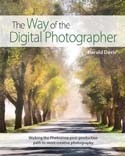 computers and to have a basic knowledge of Photoshop. You will get the most out of the workshop if you read The Way of the Digital Photographer: Walking the Photoshop post-production path to more creative photography before attending.
computers and to have a basic knowledge of Photoshop. You will get the most out of the workshop if you read The Way of the Digital Photographer: Walking the Photoshop post-production path to more creative photography before attending.
Click here to register for Mastering Creative Photoshop: The Way of the Digital Photographer.
March 15-16 and continuing: Achieving Your Potential As a Digital Photographer: A Multi-Modal Ongoing Six-Month Workshop with Harold Davis is a unique opportunity for mentoring in the context of a supportive group environment. Each participant will conclude the workshop with a completed project such as a book, portfolio, or planned exhibition.
The workshop starts with an intensive two-day in-person sessions, then proceeds using online webinar technology. Individual phone and email consultations are included, as well as a final get-together to celebrate our progress.
Click here for more information and the details of the registration process (note that a portfolio review is required).
April 15, 2014: New Session, Full Moon Golden Gate Workshop
I’ve opened a new session of this always-popular field workshop. “Join master photographer Harold Davis for an late afternoon and evening adventure, photographing the Golden Gate Bridge from various locations around the bridge.”
Click here for information and registration.
April 26 – May 4: 2014 Photograph Paris with Harold Davis
I’m very pleased to announce the 2014 Photograph Paris with Harold Davis Workshop, from April 26-May 4, 2014. Click here for the complete itinerary, terms and conditions, and online registration. A $500 per person “early-bird” discount applies if you enroll before September 1, 2013.
It is my fond hope that you’ll join Mark Brokering and myself for the extraordinary experience of photography in Paris, the City of Light. The 2014 workshop will once again be located at the wonderful and atmospheric Hotel Lutetia.
We’ve included many of the highlights from the 2013 workshop for this occasion, such as the visit to Monet’s garden at Giverny with after hours access (one of my personal favorites from 2013), and also added a day. If you check out the itinerary, I think you’ll also see some wonderful locations we didn’t get to last time, such as the top of the Tour Montparnasse at night, the Parc de Sceaux, and Père Lachaise.
As one of the participants in last year’s workshop said, put Paris ”on your bucket list ‘cause you may not see this in Heaven.”

Les Lumières de Paris (from Tour Montparnasse) © Harold Davis
Photography begins with the medium of light, which the artist captures and applies to the canvas in endlessly surprising ways. And what better place to explore this medium than Paris, the City of Light?
Join acclaimed photographer Harold Davis for the experience of a lifetime in Paris, the birthplace of photography. There you’ll have the opportunity to experience firsthand the places and sights that have inspired artists for centuries.
We’ll focus our lenses on Paris in bloom, Paris at night, and Paris in black & white, reinterpreting for ourselves some of the images that have been captured in paint and on film by many great artists, including Daguerre, Monet, Atget, Picasso, and Erwitt. We’ll have a grand time photographing and we’ll return home with many priceless shots to treasure!
“I already admired Harold Davis, and had confidence that he would lead us to fantastic places – and he did!”—2013 Paris workshop participant
2014 Photograph Paris with Harold Davis Quick facts and links:
Workshop hosts: Harold Davis, master photographer, and Mark Brokering, life-long lover of all things Parisian
Workshop duration: nine packed days (eight nights), April 26-May 4, 2014—see itinerary for details
Accomodations: At the historic, elegant and charming 4-star Hotel Lutetia in the heart of the fashionable left-bank of Paris
Online workshop e-Brochure
Detailed itinerary and terms and conditions
2014 Photograph Paris with Harold Davis registration
Workshop fee: $5639.00
“Early-bird” Discount: $500, applies through September 1, 2013
Discount for attending previous Harold Davis destination workshop: $500
2014 Photograph Paris with Harold Davis on Meetup.com
2013 Photograph Paris with Harold Davis on Meetup.com
2013 Photograph Paris photo album on Meetup.com
Photography of Paris on Harold Davis’s blog

Pyramide du Louvre in the Cour Napoléon © Harold Davis
October 19-26: 2014 Photograph Barcelona with Harold Davis Workshop
Barcelona has been called the “great enchantress” by art critic Robert Hughes and paid homage to by the otherwise curmudgeonly George Orwell. The largest city on the Mediterranean, Barcelona’s unique attraction stems in part from its freewheeling world-class cultural and artistic traditions.
In this destination photography workshop, we will join master photographer Harold Davis to explore all aspects of Barcelona with our cameras, from the well-preserved Gothic quarter with its maze-like warren of narrow and picturesque streets to Antoni Gaudi’s famous Sagrada Familia. We’ll follow in the footsteps of Carlos Ruiz Zafon, author of The Shadow of the Wind, and visit the real-life places he used as the models for the places in his books, such as the Cemetery of Forgotten Books and the Sempere and Sons bookshop. We’ll walk the Ramblas, and shoot the spectacular view from the Castell de Montjuic, and Tibidabo, photograph architecture old and new, and immerse ourselves in Catalonian culture.
We are also planning an excursion to Montserrat, the holiest site in Catalonia, where we’ll visit the basilica, photograph the panoramic views from the top of unique rock formations (accessible by funicular), and join the pilgrims visiting the shrine of the Black Virgin.
Click here for the COMPLETE ITINERARY and ONLINE REGISTRATION. A $500 early-bird discount applies if you register before December 31, 2013.
August 14, 2013
2014 Photograph Barcelona with Harold Davis Workshop
2014 Photograph Barcelona with Harold Davis Workshop
October 19-26, 2014
Barcelona has been called the “great enchantress” by art critic Robert Hughes and paid homage to by the otherwise curmudgeonly George Orwell. The largest city on the Mediterranean, Barcelona’s unique attraction stems in part from its freewheeling world-class cultural and artistic traditions.
In this destination photography workshop, we will join master photographer Harold Davis to explore all aspects of Barcelona with our cameras, from the well-preserved Gothic quarter with its maze-like warren of narrow and picturesque streets to Antoni Gaudi’s famous Sagrada Familia. We’ll follow in the footsteps of Carlos Ruiz Zafon, author of The Shadow of the Wind, and visit the real-life places he used as the models for the places in his books, such as the Cemetery of Forgotten Books and the Sempere and Sons bookshop. We’ll walk the Ramblas, and shoot the spectacular view from the Castell de Montjuic, and Tibidabo, photograph architecture old and new, and immerse ourselves in Catalonian culture.
We are also planning an excursion to Montserrat, the holiest site in Catalonia, where we’ll visit the basilica, photograph the panoramic views from the top of unique rock formations (accessible by funicular), and join the pilgrims visiting the shrine of the Black Virgin.
Come join us on the photographic adventure of a lifetime!
Harold Davis
Registration is now open for this workshop. Workshop fee is $5,036 excluding airfare and subject to the terms & conditions.
Click here for the COMPLETE ITINERARY and ONLINE REGISTRATION. A $500 deposit is required to hold a spot. A $500 early-bird discount applies if you register before December 31, 2013.

August 13, 2013
Botanique Featured in Fine Art Printing Magazine
My handmade artist book Botanique has been featured in Fine Art Printer, a glossy German magazine that is the only periodical in the world specifically devoted to fine art photographic printing (in the 3/13 issue). You can check out Fine Art Printer on the web, and download the coverage of Botanique as a PDF (click here). Papaver and Iridaceae (below) is one of the prints included in Botanique.
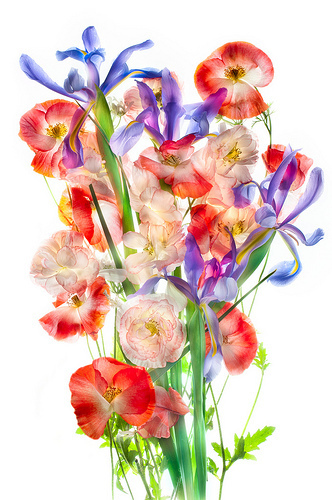
Papaver and Iridaceae © Harold Davis
I don’t read German, but trust me it only says nice things—at least in the fractured Google translation! This is a great and exciting buildup to the workshops I will be leading in Germany in 2014.

August 12, 2013
New Workshop: Mastering Creative Photoshop
In workshops I repeatedly get asked to explain my creative Photoshop techniques in more detail than is really possible in the course of a normal photography workshop. So I’ve decided to offer an intensive Photoshop-only two-day weekend workshop. Click here for more information and registration, or see below.
If you want to learn in detail what I do, and get my feedback on your Photoshop workflow and creative zeitgeist, this is your opportunity!
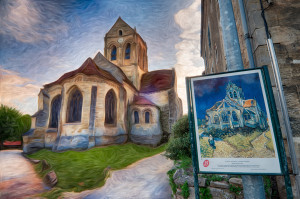
Church at Auvers © Harold Davis
What: Mastering Creative Photoshop: The Way of the Digital Photographer covers developing a personal digital Photoshop workflow. Topics explained in detail include archiving and checkpoints, RAW processing, multi-RAW processing, HDR, hand-HDR, stacking, LAB color creative effects, monochromatic conversions, using backgrounds and textures, layers, layers masks, working with channels, Photoshop filters, and plugins from Nik Software, onOne Software, and Topaz.
Prerequisites: Participants are expected to know how to use their  computers and to have a basic knowledge of Photoshop. You will get the most out of the workshop if you read The Way of the Digital Photographer: Walking the Photoshop post-production path to more creative photography before attending.
computers and to have a basic knowledge of Photoshop. You will get the most out of the workshop if you read The Way of the Digital Photographer: Walking the Photoshop post-production path to more creative photography before attending.
When: A Two-Day Weekend Workshop with Harold Davis, Saturday January 25 and Sunday January 26, 2014.
Where: Berkeley, California.
Tuition: $695.00 per person, limited to 16 participants.
Click here to register for Mastering Creative Photoshop: The Way of the Digital Photographer.
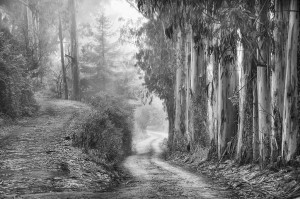
Road Less Traveled © Harold Davis

August 11, 2013
John Templeton Foundation
The 25th Annual Capabilities Report of the John Templeton Foundation features my monochromatic Nautilus shell image, shown below. The John Templeton Foundation “serves as a philanthropic catalyst for discoveries relating to the Big Questions of human purpose and ultimate reality.” It supports research on subjects “ranging from complexity, evolution, and infinity to creativity, forgiveness, love, and free will.”

Nautilus in Black & White © Harold Davis
Here’s the John Templeton Foundation website link. You can download the 25th Annual Capabilities Report as a PDF (check out page 4!).

August 10, 2013
Ancient Bristlecone Pine
These ancient trees—thousands of years old—thrive in the dry, alkaline soil of their high mountain range. They face the day and night and gradually grow old. Perhaps they are wise, in the way trees are wise. Still standing, the wrinkles and patterns in solid wood stands testament to millennia of survival.

Ancient Bristlecone © Harold Davis
Exposure data: 200mm macro lens, eight exposures at shutter speeds from 5 seconds to 1/80 of a second, each exposure at f/32 and ISO 200, tripod mounted; exposures processed and combined in Adobe Camera RAW, Nik HDR Efex Pro and Photoshop; converted to monochromatic using Nik Silver Efex Pro and Photoshop.
Click here for some more Bristlecone images!

August 9, 2013
Harold Davis Workshop Updates
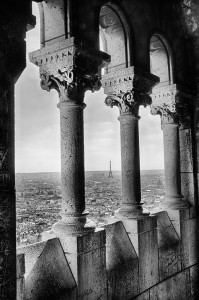
Eiffel Tower from Sacré Coeur © Harold Davis
The $500 “early-bird” discount on the 2014 Photograph Paris with Harold Davis workshop expires at the end of this month on September 1, 2013. This discount represents a substantial price savings on the cost of the workshop, so if you are interested in photographing Paris with me I suggest you take advantage of it.
I’m very pleased to announce the 2014 Photograph Paris with Harold Davis Workshop, from April 26-May 4, 2014. Click here for the complete itinerary, terms and conditions, and online registration. A $500 per person “early-bird” discount applies if you enroll before September 1, 2013.
It is my fond hope that you’ll join Mark Brokering and myself for the extraordinary experience of photography in Paris, the City of Light. The 2014 workshop will once again be located at the wonderful and atmospheric Hotel Lutetia.
We’ve included many of the highlights from the 2013 workshop for this occasion, such as the visit to Monet’s garden at Giverny with after hours access (one of my personal favorites from 2013), and also added a day. If you check out the itinerary, I think you’ll also see some wonderful locations we didn’t get to last time, such as the top of the Tour Montparnasse at night, the Parc de Sceaux, and Père Lachaise.
As one of the participants in last year’s workshop said, put Paris ”on your bucket list ‘cause you may not see this in Heaven.”
Click here for complete details and itinerary, and here for online registration.
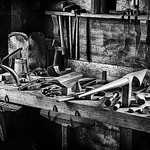 There are only a few places left in my Monochromatic HDR in the Big Sur Landscape workshop September 27-29, 2013. This workshop is sponsored by the Center for Photographic Art in Carmel, CA.
There are only a few places left in my Monochromatic HDR in the Big Sur Landscape workshop September 27-29, 2013. This workshop is sponsored by the Center for Photographic Art in Carmel, CA.
Workshop participants will take advantage of Carmel and historic Monterey as well the glorious landscape of Big Sur, photographing subjects as varied as Bixby Bridge along Highway 1, Point Lobos, Mission Carmel, and more. In the classroom, hands-on guidance will explain techniques for extending dynamic range, monochromatic conversion methods, and best practices where the two technologies intersect.
Click here for information, curriculum, and online registration.
 If you are interested in my unique technique for photographing flowers on a lightbox—and the related work in the Photoshop darkroom—there is only one spot left in the two-day Photographing Flowers for Transparency workshop, December 7 and December 8, 2013. The workshop is located in downtown Berkeley, California near the 4th Street boutique shopping district.
If you are interested in my unique technique for photographing flowers on a lightbox—and the related work in the Photoshop darkroom—there is only one spot left in the two-day Photographing Flowers for Transparency workshop, December 7 and December 8, 2013. The workshop is located in downtown Berkeley, California near the 4th Street boutique shopping district.
In this unique workshop offering master photographer Harold Davis shows the techniques he uses to create his floral masterpieces. Arrangement, composition, photography, post-production will all be covered, as will Harold’s special techniques for shooting on a lightbox.
Harold is only planning to give this workshop once this year. There is no better way to learn the floral transparency techniques that he has pioneered. The two-day format will give participants the chance to complete their imagery using the techniques that Harold will demonstrate.
Here are some comments from the 2012 Floral Transparency Workshop:
“Loved the pace, in-depth instruction and generous sharing.”
“EXCELLENT PRESENTATION AND COVERAGE OF MATERIAL. MR. DAVIS WAS PATIENT TO ANSWER ALL QUESTIONS.”
“Harold, thank you for the time, expense and effort it took to put on a great one-day workshop….You are a wealth of information and share it so graciously.”
“Outstanding workshop!”
“A very packed day! Harold is very clear and organized; an outstanding photographer who is also an outstanding teacher.”
Click here for information and registration.
We’ve opened a new session of the Full Moon Golden Gate Workshop on Tuesday, April 15, 2014 to take advantage of the full moon rising shortly after sunset, framed by the Golden Gate Bridge.
Join master photographer Harold Davis for an late afternoon and evening adventure, photographing the Golden Gate Bridge from various locations around the bridge.
Note: This workshop is being offered well in advance because it is timed according to sunset and moonrise, and to help you plan. Due to limited size, our experience is that it will fill up—in other words, to avoid disappointment please don’t delay!
Click here for information and registration.
I have some exciting new workshops in the planning stages for 2014, so please stand by for further information.

Waterdrops as a lens
Waterdrops reflect and refract the world around them, creating exciting globes of color. But waterdrops also magnify, behaving in this way like camera lenses. Read more on MasteringPhoto.com (an excerpt from my book Photographing Waterdrops: Exploring Macro Worlds with Harold Davis).

Drops of Rain © Harold Davis

August 7, 2013
Adding Textures to Flower Photos
I have a new column out on Photo.net, Adding Textures to Flower Photos. Here’s the description of what you’ll learn: This column explains all you need to know to get started adding textures in Photoshop to your photos, starting with the concept of “texturizing.” I’ll explain the mechanics of adding the texture overlay, choosing a blending mode, and masking the texture (if desired). You’ll also need to know where to find textures to license, and how to make your own textures if you are interested.
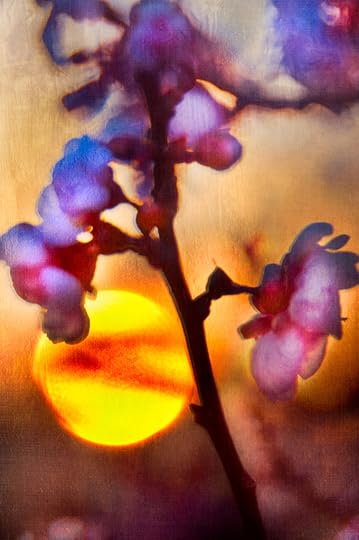
Setting Sun and Cherry Blossoms © Harold Davis
About the image: With this shot of a setting sun seen through a cherry blossom, I focused on the flower blossoms, relying on the fact that throwing the sun way out-of-focus made it appear much larger; I added artistic impact using a textural overlay as I explain in Adding Textures to Flower Photos on Photo.net.

July 25, 2013
Van Gogh’s Church at Auvers
Auvers-sur-Oise is hallowed ground for fans of Vincent van Gogh (and who isn’t a fan?). Here he painted many of his greatest paintings, lived the last 93 days of his life, and is buried. Today a suburb to the north of Paris, in van Gogh’s day Auvers was a pretty country village, home to Dr. Paul Gachet. Dr. Gachet was part of the same circle of avant-garde impressionist artists as van Gogh; he boarded and “treated” van Gogh for mental illness, although van Gogh felt that Gachet actually was in worse shape than he was.

Church at Auvers © Harold Davis
Before his very untimely death by gunshot to the chest under ambiguous circumstances—often, but not definitively narrated as suicide—van Gogh painted many scenes around Auvers, including Dr. Gachet’s house, the famous Wheat Field with Crows, and of course the Church at Auvers.
The modern pilgrim to the hallowed ground trod by the great van Gogh finds many of the Auvers landscapes unchanged. While not quite as overrun as Giverny, there are plenty of visitors, and signs for tourists have been strategically placed more-or-less where van Gogh painted, showing his great painting of the location on each sign.
With the image of the Church at Auvers shown above I decided to include the tourist sign in my image. I left the right side of the photo including the sign without manipulation, and worked the left side in post-production so that one could perhaps be stepping into the reality of a van Gogh painting—or maybe a kind of dream. Because, as Vincent van Gogh put it, “I dream of painting and then I paint my dream.”
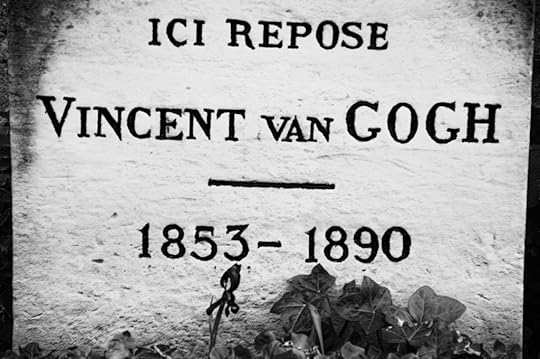
Vincent van Gogh’s Grave © Harold Davis
Related stories: Sweet Treat; The Role of the Artist; Go Van Gogh; Starry Night.



